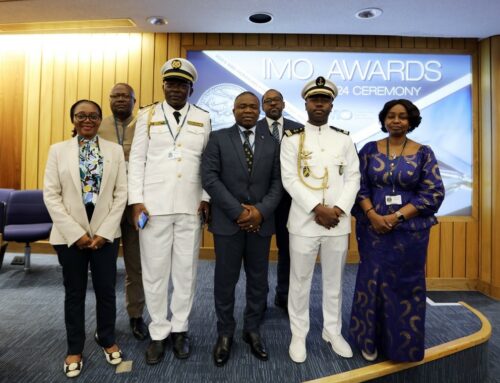Toxic Water Contamination at Joint Base San Antonio: An Overview

Joint Base San Antonio (JBSA), a military installation encompassing Army Base Fort Sam Houston, Randolph Air Force Base, Lackland Air Force Base, and Martindale Army Airfield, has faced significant challenges related to toxic water contamination. This problem, which has raised health and environmental concerns, involves the contamination of the water supply by various hazardous substances. This poses a grave risk to the military personnel, their families, and civilian workers stationed at the base.
Origins of the Contamination
The water contamination at JBSA can be traced back to multiple sources and activities typical of military bases, including:
- Industrial Operations: Activities such as vehicle maintenance, fueling, and the use of industrial solvents have historically contributed to the contamination. Chemicals like trichloroethylene (TCE) and perchloroethylene (PCE), commonly used as solvents and degreasers, have been identified as primary pollutants.
- Firefighting Foam: The use of Aqueous Film-Forming Foam (AFFF), which contains per- and polyfluoroalkyl substances (PFAS), has been a significant source of water contamination. AFFF is used extensively in firefighting training and emergency response situations due to its effectiveness in extinguishing fuel fires.
- Leakage and Spills: Accidental spills and leakage from storage tanks, pipelines, and waste disposal sites have contributed to the seepage of hazardous substances into the groundwater and surface water systems.
Impact on Health and Environment
The presence of toxic substances in the water supply has numerous adverse effects on both human health and the environment:
- Health Risks: Long-term exposure to chemicals like TCE, PCE, and PFAS has been linked to severe health conditions, including cancer, liver damage, immune system disorders, and developmental issues in children. Military personnel and their families who have resided at JBSA may be at an increased risk of these health problems.
- Environmental Damage: Contaminated water affects the surrounding ecosystems, harming aquatic life and potentially entering the food chain. The long-term presence of chemicals like PFAS in the environment exacerbates these impacts, making remediation efforts more challenging.
Response and Mitigation Efforts
 Recognizing the severity of the contamination, various measures have been undertaken to address and mitigate the issue:
Recognizing the severity of the contamination, various measures have been undertaken to address and mitigate the issue:
- Water Testing and Monitoring: Regular testing and monitoring of water quality have been implemented to identify contamination levels and track changes over time. This data is crucial for assessing the effectiveness of remediation efforts.
- Clean-Up Initiatives: The U.S. Department of Defense (DoD) has initiated several clean-up projects to remove or neutralize contaminants from the water supply. Techniques such as activated carbon filtration and advanced oxidation processes are employed to treat contaminated water.
- Policy and Regulation: Stricter regulations and policies have been enforced to prevent future contamination. These include guidelines for the safe handling and disposal of hazardous materials and restrictions on the use of PFAS-containing products.
- Health and Safety Programs: Programs aimed at informing and protecting the affected population have been established. Health screenings, medical support, and educational campaigns are part of the efforts to mitigate the impact on human health.
Despite the progress made, several challenges remain before fully addressing the contamination issue at JBSA:
- Extent of Contamination: The widespread nature of contamination, especially with persistent chemicals like PFAS, complicates clean-up efforts. Comprehensive site assessments and long-term remediation plans are necessary to tackle the issue effectively.
- Resource Allocation: Adequate funding and resources are critical to sustain clean-up initiatives and health programs. Ensuring continuous support from government and military budgets is essential for the success of these efforts.
- Community Engagement: Engaging with the affected community and maintaining transparency in communication are vital for building trust and ensuring that those impacted are adequately supported and informed.
 The toxic water contamination at Joint Base San Antonio represents the broader issue of environmental and health risks associated with military operations. Addressing this problem requires a multifaceted approach involving rigorous monitoring, effective remediation, regulatory enforcement, and strong health support systems. As efforts continue, the lessons learned from the contamination at JBSA can inform strategies to prevent and manage similar issues at other military installations, protecting both human health and the environment.
The toxic water contamination at Joint Base San Antonio represents the broader issue of environmental and health risks associated with military operations. Addressing this problem requires a multifaceted approach involving rigorous monitoring, effective remediation, regulatory enforcement, and strong health support systems. As efforts continue, the lessons learned from the contamination at JBSA can inform strategies to prevent and manage similar issues at other military installations, protecting both human health and the environment.
We here at the Herd Law Firm, PLLC, support every man, woman, and child (including civilians) exposed to contaminants at Camp Lejeune and Camp Pendleton, and believe you deserve quality and attentive legal representation. The same will be true if and when JBSA-related conditions becomes a claim-review system. We are a Northwest Houston-based law firm, and are proud to be able to aid our veterans and their families in seeking restitution for their injuries. Contact us at the Herd Law Firm at 713-955-3699 or at Charles.Herd@herdlawfirm.com. We would be pleased to speak with you about the full spectrum of options you have, and help you make an informed choice.
7/25/2024
Image Credit: JBSA.gov










